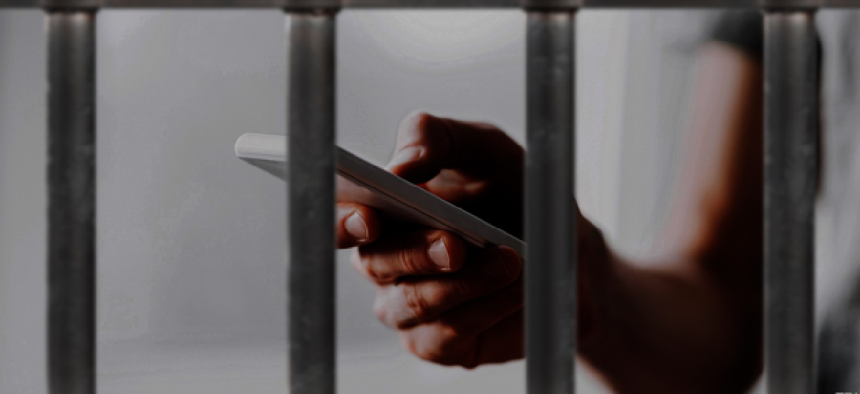Micro-jamming tech could kill prison cellphone use


Connecting state and local government leaders
The U.S. Bureau of Prisons is testing whether it can prevent inmate cellphone use without disrupting services in the surrounding area.
Contraband cellphones have long been an ongoing correctional security and public safety concern for the federal, state and local correctional agencies across the country, but federal officials may have an answer.
Inmates use cellphones to direct criminal activity outside prison walls, including threats to public officials, intimidation of witnesses. As the phones get smaller and more powerful, they've become so common that in some states corrections officers annually confiscate as many as one phone for every three inmates. Phones are smuggled in by friends, purchased from compromised corrections staff and even dropped in by drone.
Officials have used metal, radio-frequency and ferromagnetic detectors, body scanners and even dogs to sniff out the contraband devices on prisoners and vehicles.
Others have experimented with technologies to detect the phones and transmissions. In 2010 Mississippi became the first state to implement a managed cellular access system at its state penitentiary at Parchman, where it was able to reduce both the number of intercepted transmissions and the number of confiscated phones inside the walls. Maryland implemented a similar system in 2013.
Jamming cellular transmissions, which may seem an obvious solution, is illegal -- partially because it could interfere with legitimate emergency communications from both within and near a facility. Federal law also prohibits anyone other than federal agencies from jamming radio signals, but last March the Federal Communications Commission approved rules to streamline the process for using technology to detect and block contraband phones in prisons and jails across the U.S.
The new rules make it easier for corrections officials get FCC authorization to use "contraband interdiction systems" that feature radio-based technologies to detect and block calls, texts and internet access from contraband wireless devices.
The Federal Bureau of Prisons, meanwhile, has been experimenting with micro-jamming to prevent wireless communication. On Jan. 17, working with the National Telecommunications and Information Administration and the FCC, the BOP tested the technology at the Federal Correctional Institution at Cumberland, Md., to see if it could prevent wireless communication by an inmate using a contraband device at the individual cell housing unit level without disrupting services in the surrounding area.
As part of the Jan. 17 test, NTIA evaluated the efficacy of the micro-jamming technology and whether it interfered with radio frequency communications. The BOP and NTIA will review the data and analysis results from both BOP’s and NTIA’s testing and develop recommendations for strategic planning and possible acquisition.
“As criminals increase their technological capacity to further criminal activity from within prisons, we must also explore technologies to prevent this from happening," Assistant Attorney General Beth Williams of the Justice Department’s Office of Legal Policy said. "This test is part of our ongoing efforts to find a solution.”
NEXT STORY: Is your data disaster-ready?





